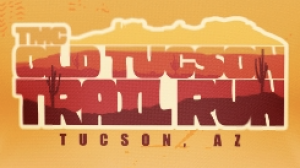Land History and Acknowledgement
 Our running events take place throughout Arizona, including in Southern Arizona at Saguaro National Park, the Biosphere 2 in Oracle, in Downtown Tucson, near the South Rim of the Grand Canyon, and at Old Tucson Studios. Regarding the trail run at Old Tucson, we recognize that Old Tucson Studios seeks to create a simplistic, mythic version of what some call the American West, focusing primarily on the later decades of the 19th century. We recognize further that some of the attractions of Old Tucson, such as mock gun fights and saloon singing, may be considered inappropriate to some.
Our running events take place throughout Arizona, including in Southern Arizona at Saguaro National Park, the Biosphere 2 in Oracle, in Downtown Tucson, near the South Rim of the Grand Canyon, and at Old Tucson Studios. Regarding the trail run at Old Tucson, we recognize that Old Tucson Studios seeks to create a simplistic, mythic version of what some call the American West, focusing primarily on the later decades of the 19th century. We recognize further that some of the attractions of Old Tucson, such as mock gun fights and saloon singing, may be considered inappropriate to some.
We respectfully acknowledge that these lands have been peopled for thousands of years and that this beautiful desert has long been a sought-after landscape, with human habitation dating back at least 12,000 years. In Southern Arizona, according to the Tucson Indian Center, "The Tucson area has long been the traditional site for Indian settlements. From the Archaic and Hohokam Indians, to the Tohono O’odham and Yaqui, the waters of the Santa Cruz River and the surrounding fertile land attracted desert dwelling tribes" (https://www.ticenter.org/history, retrieved January 1, 2023).
Clashes on this borderlands include Spanish first arriving in the 1530's, raids by Apache and Comanche throughout the 1700's and 1800's, and even the Confederate army fighting in the desert during the American Civil War.
For additional information, we refer to the Friends of Saguaro National Park website (https://www.friendsofsaguaro.org/nativepeoples, retrieved January 1, 2023): Human habitation in the Tucson Basin dates back approximately 12,500 years -- to the Pleistocene Age. The first people were likely descended from those who migrated across a land bridge from Siberia to Alaska; bands of hunters were roaming the desert grasslands of southern Arizona by about 10,000 BC. Archeologists have concluded that sites found in the Tucson Basin, along the Santa Cruz River, likely represent the oldest, continuously inhabited area in the United States. About 2,300 years ago, a group we now call the Hohokam had settled in southern Arizona -- including the Santa Cruz valley. By AD 700, they had a well-developed agricultural economy including extensive irrigation systems.
Archeological finds in the Rincon Mountain District of Saguaro National Park show that Hohokam villages existed there for about 600 years -- along Rincon Creek and its tributary washes. Then, during the 15th century, the Hohokam culture simply vanished.
Contemporary native peoples that would constitute the ethnographic history of the Park include:
Akimel O'odham (also known as Pima)
Apache
Hopi
Maricopa
Yaqui
Tohono O'odham ("Desert People")
Yavapai
Zuni
For those interested, The Desert Museum offers insights on the Spanish and Mexican contact in the region here: https://www.desertmuseum.org/members/sonorensis/week9.php.
For additional information about local tribal lands, see http://www.tonation-nsn.gov/ and https://itcaonline.com/member-tribes/pascua-yaqui-tribe/ and https://heard.org/education/arizona-indian-communities/.
For those interested in making the running community more accessible, inclusive, and visible for all, you may wish to read about the Running on Native Lands Initiative at https://www.risinghearts.org/nativelands. You can also visit https://native-land.ca. For additional materials, perhaps see the recommended books here: https://www.nypl.org/blog/2020/10/09/honoring-indigenous-peoples-recommended-reads.

